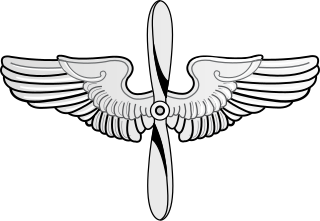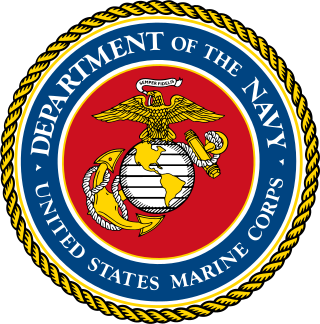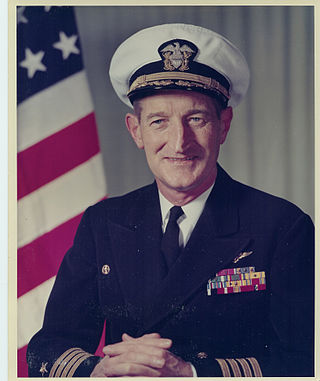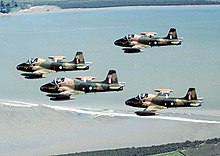
A flight is a small military unit within the larger structure of an air force, naval air service, or army air corps; and is usually subordinate to a larger squadron. A military aircraft flight is typically composed of four aircraft, though two to six aircraft may also form an aircraft flight; along with their aircrews and ground staff. In some very specific examples, typically involving historic aircraft, a flight may contain as many as twelve aircraft, as is the case with the Battle of Britain Memorial Flight (BBMF) of the British Royal Air Force (RAF). In most usages, two or more flights make up a squadron. Foreign languages equivalents include escadrille (French), escuadrilla (Spanish), esquadrilha (Portuguese), zveno (Russian), and Schwarm (German).

Aerial warfare is the use of military aircraft and other flying machines in warfare. Aerial warfare includes bombers attacking enemy installations or a concentration of enemy troops or strategic targets; fighter aircraft battling for control of airspace; attack aircraft engaging in close air support against ground targets; naval aviation flying against sea and nearby land targets; gliders, helicopters and other aircraft to carry airborne forces such as paratroopers; aerial refueling tankers to extend operation time or range; and military transport aircraft to move cargo and personnel.
This is a list of aviation-related events from 1914.
This is a list of aviation-related events from 1918:
Wing commander is a senior officer rank used by some air forces, with origins from the Royal Air Force. The rank is used by air forces of many countries that have historical British influence.

The United States Army Air Service (USAAS) was the aerial warfare service component of the United States Army between 1918 and 1926 and a forerunner of the United States Air Force. It was established as an independent but temporary branch of the U.S. War Department during World War I by two executive orders of President Woodrow Wilson: on May 24, 1918, replacing the Aviation Section, Signal Corps as the nation's air force; and March 19, 1919, establishing a military Director of Air Service to control all aviation activities. Its life was extended for another year in July 1919, during which time Congress passed the legislation necessary to make it a permanent establishment. The National Defense Act of 1920 assigned the Air Service the status of "combatant arm of the line" of the United States Army with a major general in command.

Francis Stanley "Gabby" Gabreski was an American career pilot in the United States Air Force who retired as a colonel after 26 years of military service. He was the top American and United States Army Air Forces fighter ace over Europe during World War II and a jet fighter ace with the Air Force in the Korean War.
A group is a military unit or a military formation that is most often associated with military aviation.

Naval aviation is the application of military air power by navies, whether from warships that embark aircraft, or land bases.

General John Charles Meyer was an American World War II flying ace, and later the commander-in-chief of the Strategic Air Command (SAC) and director of the Joint Strategic Target Planning Staff at Offutt Air Force Base, Nebraska. SAC was the United States' major nuclear deterrent force with bombers, tankers and reconnaissance aircraft, and intercontinental ballistic missiles. The Joint Strategic Target Planning Staff coordinated the nation's nuclear war plans and developed the Single Integrated Operations Plan.

Christian Frank Schilt was one of the first Marine Corps aviators and a recipient of the United States highest military decoration, the Medal of Honor. He received the Medal for using his biplane to evacuate wounded Marines under fire in Nicaragua.

Captain David McCampbell was a United States Navy captain, naval aviator, and a Medal of Honor recipient. He retired from the navy in 1964 with 31 years of service.

David Carl Schilling was a U.S. Air Force officer, fighter ace credited with 22½ confirmed claims, and leading advocate of long-range jet fighter operations. Kansas' Schilling Air Force Base was named in his memory.

The United States Marine Corps is organized within the Department of the Navy, which is led by the Secretary of the Navy (SECNAV). The most senior Marine commissioned officer is the Commandant of the Marine Corps, responsible for organizing, recruiting, training, and equipping the Marine Corps so that it is ready for operation under the command of the unified combatant commanders. The Marine Corps is organized into four principal subdivisions: Headquarters Marine Corps, the Operating Forces, the Supporting Establishment, and the Marine Forces Reserve.

Colonel Hubert Zemke was a career officer in the United States Air Force, a fighter pilot in World War II, and a leading United States Army Air Forces ace. General Jimmy Doolittle praised Zemke as his "greatest fighter group commander". He commanded the 56th Fighter Group in England, which came to be known as "Zemke's Wolf Pack".

U.S. Air Force aeronautical ratings are military aviation skill standards established and awarded by the United States Air Force for commissioned officers participating in "regular and frequent flight", either aerially or in space, in performance of their duties. USAF aeronautical badges, commonly referred to as "wings" from their shape and their historical legacy, are awarded by the Air Force in recognition of degrees of achievement and experience. Officers earning these badges and maintaining their requirements are classified as rated officers and receive additional pay and allowances.

Jay Thorpe Robbins was a career officer in the United States Air Force who rose to the rank of lieutenant general. He was also a United States Army Air Forces fighter ace of World War II.

A squadron in an air force, or naval or army aviation service, is a unit comprising a number of military aircraft and their aircrews, usually of the same type, typically with 12 to 24 aircraft, sometimes divided into three or four flights, depending on aircraft type and air force.

Frederick T. Moore Jr. was a United States Navy captain. During World War II, he was executive officer of Fighter Squadron 1 operating off the carrier USS Yorktown (CV-10) and commanding officer of the Air Group 35 aboard the aircraft carrier USS Chenango in the Pacific. During the Korean War, he was the commanding officer of naval air training at NAS Pensacola and the air officer on USS Coral Sea. His first sea command was aboard USS Suribachi. In 1962–1963, Moore was the eighth commanding officer of USS Saratoga. Late in his career during the Vietnam War, he was Chief of Staff of the Naval Air Training Command at Naval Air Station Pensacola from October 1965 to July 1969.

Willard Wesley Millikan was a United States Air Force Major General and a flying ace, who was credited in destroying 13 enemy aircraft in aerial combat during World War II. He retired in 1969, after 28 years of distinguished service.
















